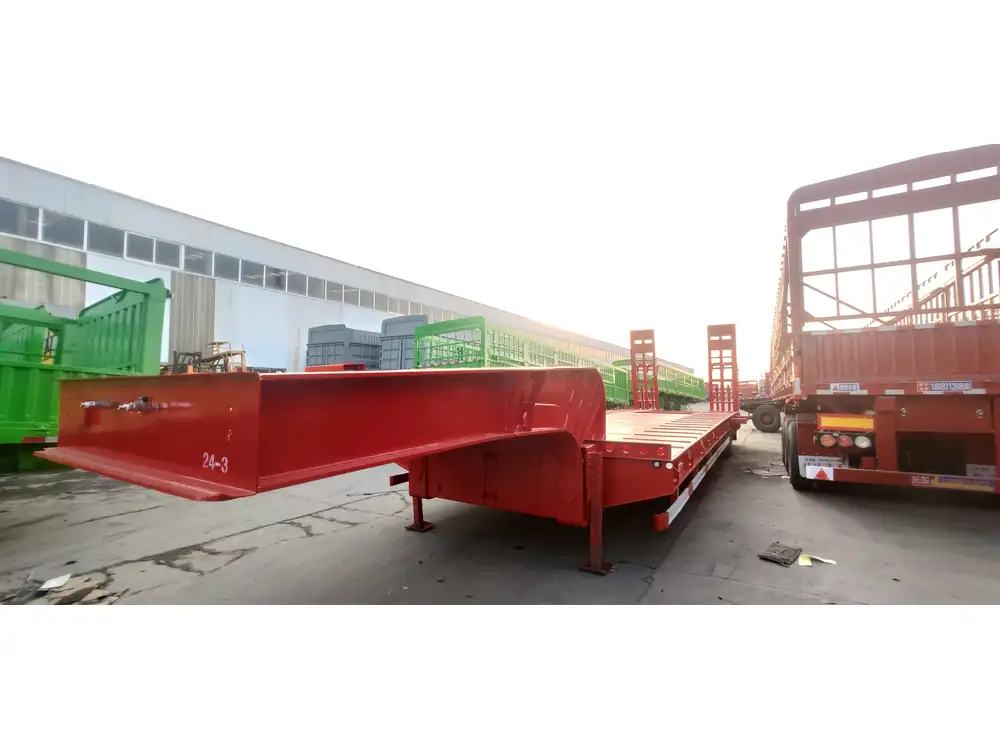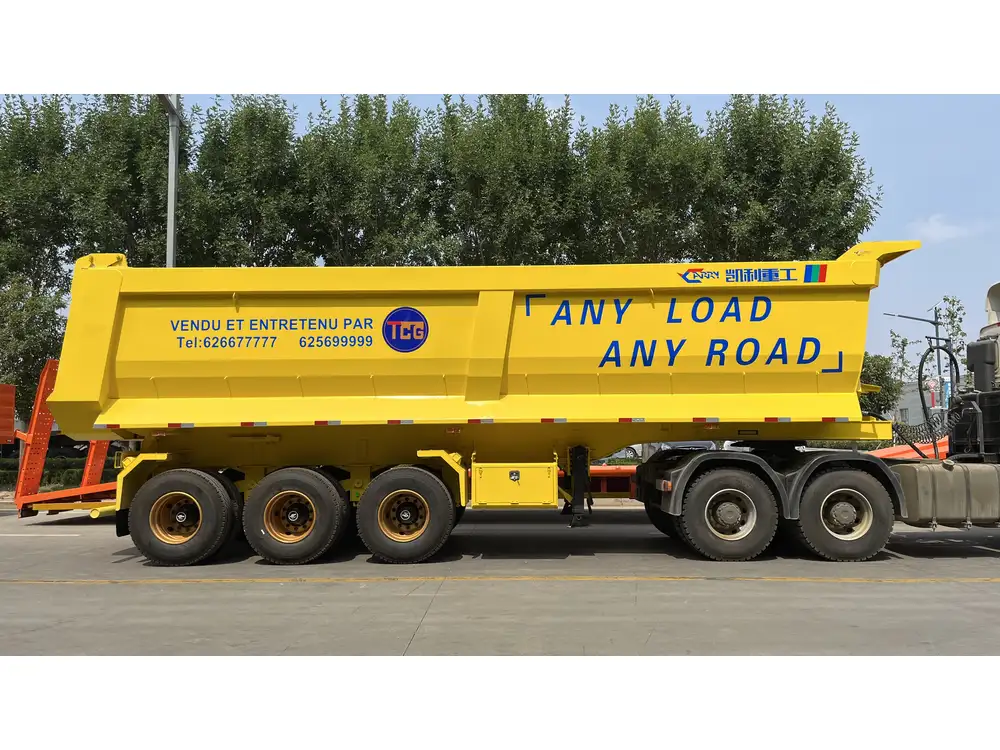Navigating the complexities of procuring a flatbed trailer can seem daunting, particularly if you are new to the logistics and transportation sector. Flatbed trailers serve a vital purpose in the freight and transportation industry, offering flexibility and utility for businesses needing to transport oversized or irregularly shaped cargo. This article walks through the essential processes involved in requesting a flatbed trailer, ensuring you have all the knowledge required to make an informed decision that aligns with your transport needs.
Understanding Flatbed Trailers
Before diving into how to ask for a flatbed trailer, it’s crucial to understand what these trailers are and why they may be necessary.
Definition and Types
Flatbed trailers are characterized by their flat, open design that lacks sides and a roof. They are primarily used for transporting heavy loads such as construction materials, machinery, and large shipping containers. Here are some common types of flatbed trailers:
| Trailer Type | Description | Best Use Cases |
|---|---|---|
| Standard Flatbed | A flat platform without sides or a roof. | Over-sized loads, building materials. |
| Step Deck | Has a lower deck for taller loads. | Construction equipment, taller cargo. |
| Double Drop | Features two drops in height with a flat section in between. | Extra tall cargo, heavy machinery. |
| Conestoga | Has a canvas cover that can be rolled back. | Weather-sensitive cargo. |
| Removable Gooseneck | Allows for easy loading of heavy equipment. | Heavy machinery, shipping containers. |

Advantages of Flatbed Trailers
- Versatility: Their open design facilitates the transport of a variety of goods.
- Accessibility: Easy loading and unloading from all sides enhances efficiency.
- Stability: Stronger frames allow for secure carrying of heavy loads without compromising safety.
Determining Your Go-to Request
Once you understand the essentials of flatbed trailers, you can formulate your request based on specific criteria relevant to your needs. Below is a structured approach to guide you through this process.
Step 1: Define Your Requirements
Before contacting a manufacturer or supplier, outline your specific needs clearly. Ask yourself:
- What type of cargo do I need to transport?
- What are the dimensions and weight of my cargo?
- How frequently will I require the trailer?
- What is my budget for this purchase?

Step 2: Research Potential Suppliers
Once you have a clear understanding of your needs, the next step involves researching potential suppliers who specialize in flatbed trailers. Consider the following factors during your search:
- Reputation and Experience: Look for established manufacturers with good reviews and a history of reliability in the industry.
- Customization Options: Determine if the supplier offers customization to meet your specific requirements.
- Warranty and Support: Review the warranty details and support services provided by the supplier.
Step 3: Drafting Your Request
Crafting a comprehensive request for a flatbed trailer is pivotal, as it sets the tone for your communication with suppliers. Below is a template example to guide your drafting process.
Sample Request Template
Subject: Request for Quotation on Flatbed Trailer
Dear [Supplier’s Name/Business]
I hope this message finds you well. We are currently in the process of procuring a flatbed trailer to meet our transportation needs, and we would appreciate your assistance in this matter.
1. Cargo Specifications:
- Type of Cargo: [e.g., construction materials, oversized machinery]
- Dimensions: [Length x Width x Height]
- Weight: [Total weight or weight per unit]
2. Trailer Specifications Needed:
- Type of Trailer: [e.g., standard flatbed, step deck]
- Loading Capacity: [Required load capacity]
- Additional Features: [e.g., tarping system, removable gooseneck, etc.]
3. Quantity: [Number of units required]
4. Preferred Payment Terms: [State your budget or payment terms]
5. Delivery Timeline: [Your expected timeline for delivery]
We would like to understand your offerings and pricing better and would greatly appreciate your prompt response to this inquiry. Thank you for considering our request.
Best regards,
[Your Name] [Your Company] [Your Contact Information]
Step 4: Evaluate Responses
Upon sending out requests, you will likely receive multiple quotes from various suppliers. It is essential to evaluate these responses critically based on the following criteria:
| Criteria | Explanation |
|---|---|
| Pricing | Does the price align with your budget? |
| Specifications | Does the trailer meet your requirements? |
| Lead Time | How quickly can they deliver the trailer? |
| Support | What kind of post-purchase support or warranty is offered? |
Step 5: Follow Up and Confirm
Once you’ve analyzed the responses, follow up with any supplier whose proposal piques your interest. Clarify any doubts about pricing, specifications, or delivery times. Confirm an order by providing the necessary documentation and making the required payments.
Common Questions When Requesting a Flatbed Trailer
Here are several questions potential buyers frequently ask when considering a flatbed trailer.

What Is the Average Cost of a Flatbed Trailer?
The cost of flatbed trailers varies significantly based on type, size, and manufacturer. Typical prices range from $15,000 to over $50,000. Ensure to factor in additional costs like customization, delivery, and registration fees.
What Maintenance Do Flatbed Trailers Require?
Regular maintenance ensures the longevity and performance of your flatbed trailer. Key maintenance tasks include:
- Tire Inspections: Check for wear and alignment regularly.
- Brake Checks: Ensure brakes are functioning correctly.
- Frame Inspection: Look for any signs of wear, rust, or damage.
Can Flatbed Trailers Be Customized?
Yes, many manufacturers offer customization options to cater to specific needs. Customizations may include:
- Tarping Systems: To protect cargo from weather conditions.
- Side Railing: For additional security of the load.
- Enhanced Stability Features: For specialized loads.

How Do I Ensure My Cargo Is Secure During Transport?
Utilizing proper tie-downs and securing features specific to your flatbed trailer is essential. Common practices include:
- Using Ratchet Straps: These provide security and adjustability.
- Corner Protectors: To prevent load shifting during transit.
- Chain Binders: In situations involving particularly heavy loads.
Conclusion
Requesting a flatbed trailer entails various steps that must be followed methodically to ensure you find a solution that perfectly matches your transport needs. With a clear understanding of your requirements, thorough supplier research, and an articulate request, you can secure the right flatbed trailer with confidence.
This multi-faceted approach not only streamlines the procurement process but also equips you with the knowledge necessary to drive successful transportation logistics for your operations. The key is attention to detail—this is where success lies in ensuring your business thrives with the best equipment available. Engage with the right supplier, and you will be well on your way to a seamless transport experience with your new flatbed trailer.



